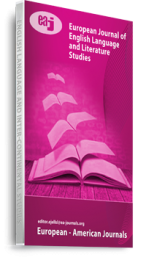This research aims to investigate the special methods relied upon by Palestinian writers – from 1948 until 1975 – to avoid censorship, prosecution and harassment, with a specific focus on the method of intertextuality, which has become a basic code through which Palestinian writers have created their bold and sharp ideas, which imitated their reality in all its details, by displaying witness models from eight theatrical works, namely:
- Tariq al-Khalaṣ (1950), a prose-play by Jamil Mohammad Abu Maizer (1922-1993), and Jamal al-Din Ḥijazi ( [1] (1991-1923
- al-Adl Asas al-Mulk (1952), a prose-play by Nasri al-Jozi (1908-1996) [2]
- Jalsa Kamilat al-Niṣab (1955), a prose-play by Hadiya ʿAbd al-Hadi (1919-1969) [3]
- Sirr Shahrazad (1958), a prose-play by Najwa Qaʿwar Farah (1923-2015) [4]
- Qadar al-Donia (1962), a prose-play, by Emile Ḥabibi (1921-1996) [5]
- Bayt al-Junūn (1965), a prose-play by Tawfiq Fayyad (1938- ) [6]
- Shamshon and Dalilah/ Samson and Delila (1971), a poetic-play by Muʿin Basiso (1927-1984) [7]
- al-Ibn (1974), a prose-play by Samih al-Qasim (1939-2014) [8]
The choice of the plays was not random, but rather came to cover the “period” of the total central-political events in Palestine, (Nakba 1948), the 1967 War (Setback/ Naksa) and the 1973 War (October War) – dealing with the issues addressed by these plays, and the techniques used by their writers, illustrating the differences and innovations between each stage. The order of the contents in the first and second stages (until the Setback in 1967), is based on the contents of the past, but in the third phase (in the 1970s) the theatrical works were centered around political issues, homeland, and social life.This study is also an attempt to demonstrate the impact of political events and social vagaries on Palestinian poets and writers, in terms of the use of intertextuality, which has become characteristic in the Palestinian theatre as a highly approved technique in most Palestinian plays, especially heritage intertextuality, and religious intertextuality. The nature of the Palestinian theatre, which is busy with various political events and social fluctuations, offers it a special characteristic. These elements have helped strengthen the dramatic aspect, the ease of the structure of the play, and increase of voices and their interconnection in the play, which enriched the theatrical text, propelled its aesthetic and artistic level, and multiplied its messages.The Palestinian theatre started from the center of its suffering, and its difficult conditions that it lived with at all levels, in addition to its being clearly influenced by the experience of Western theatre, and its keeping pace with the techniques used in it, which helped the development of the Palestinian theatre and observed a qualitative leap at the theatrical level. Here, it is necessary to point out something very exciting, which seemed clear in our current study of selected plays, which is the success of the writers in making the form and content work together to create a clear idea, indicates the importance of resistance to the occupation. Thus, the plays turned into brave cries and enduring attitudes that challenged their reality, with exciting techniques and innovations, in some of which the writers exceeded the stereotypes of the Palestinian play at home.
Keywords: Intertextuality, Palestinian theatre choice, compulsion, theatrical samples

